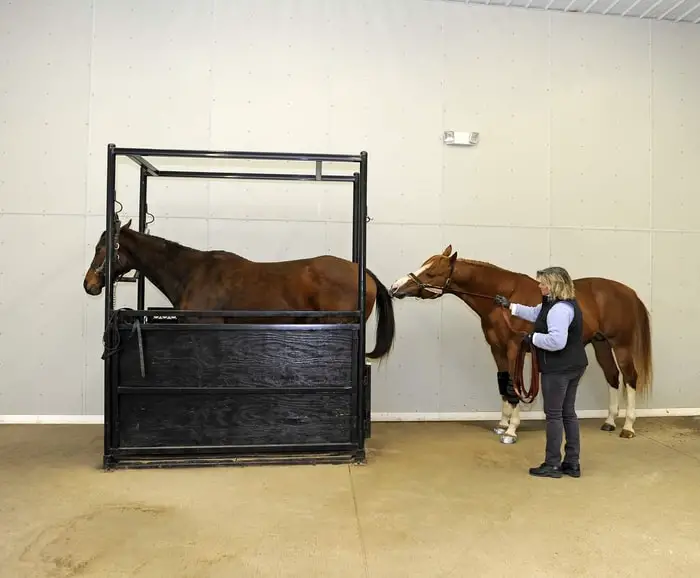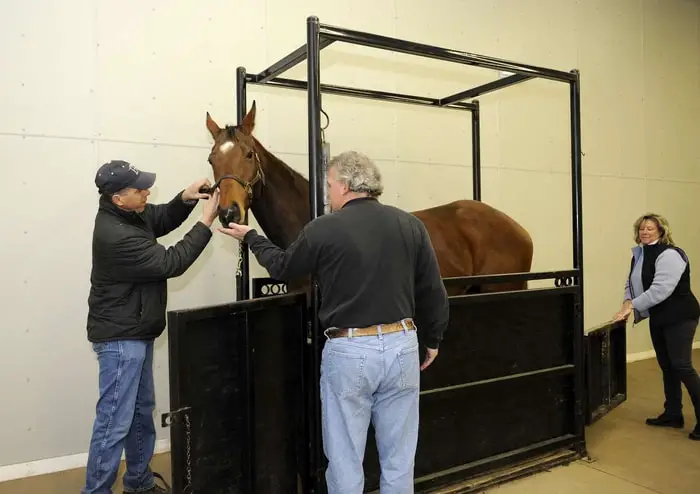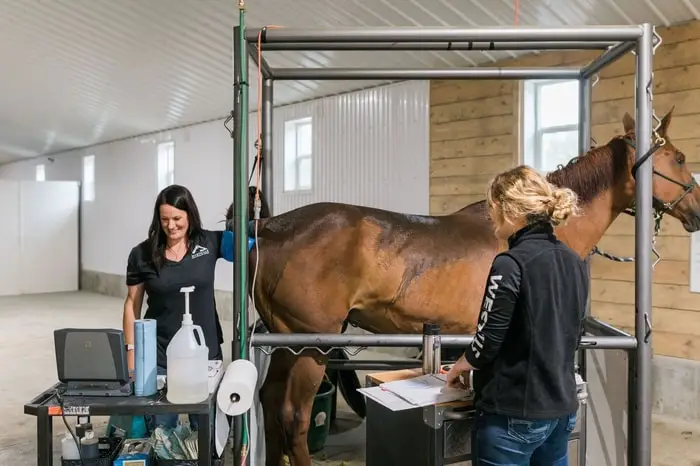Contagious Equine Metritis or CEM is an acute, highly contagious venereal disease of horses and donkeys. The disease is characterized by a profuse mucopurulent venereal discharge and early return to the estrus cycle in most affected mares. Infected horses and chronically infected mares show no clinical signs. The disease occurs primarily in European countries, but technical challenges in the multiplication of the causative bacteria prevent accurate determination of the precise distribution of the disease.
Causes of CEM in Horses
Contagious Equine Metritis is caused by Gram-negative, microaerophilic, coccobacillus bacteria Haemophilus equigenitalis. The organism is also known as Contagious Equine Metritis Organism (CEMO). Few strains of CEMO are streptomycin-resistant, and some are streptomycin sensitive. The organism can be cultured best in Chocolate Eugon agar at 37°C having 5-10% CO2 in the environment. Tylorella equigenitalis is saccharolytic but catalyzed, cytochrome oxidase, phosphatase positive, and unreactive to other conventional biochemical tests.

Transmission of Contagious Equine Metritis
CEM in horses is transmitted mainly by mating, but infected utensils also play a vital role. Undetected infected mares and stallions are the sources of a new infection. Infected stallions show minimum signs and harbor the bacteria in the smegma of the prepuce and the body of the penis, especially in the urethral fossa. The transmission rate of CEM is exceptionally high, and virtually every mare mated by an infected stallion becomes infected.

Clinical Signs of CEM in Horses
Copious, mucopurulent genital discharge in the mares is seen 10-14 days after the infected mating. Although the discharge reduces after a few days, the mare may remain infected for several months. The mare may return to estrus after a shortened estrus cycle.
- The chronically infected mare shows look healthy.
- Most mares do not become pregnant at the time of infected mating.
- If they conceive, they may infect the foal at or shortly after birth.
- The foals so infected may become carriers of CEMO when they reach maturity.

Pathological Lesions of Contagious Equine Metritis
The lesions of CEM in horses are:
- Edema and hyperemia of the endometrium of the uterus, endocervix, and the mucosa of the vagina.
- The microscopic lesions include invasion of the diseased tissues by neutrophils during the acute phage and macrophages, lymphocytes, and plasma cells later in the infection.

Diagnosis of CEM in Horses
Diagnosis of CEM depends on the isolation of the causative organisms. Although other bacterial diseases of the genital tract of mares may produce a purulent vaginal discharge, this is uncommon, and no other such pathogen of the equine reproductive tract is as contagious as CEMO.
- In the mares, swabs for culture should be taken from the endometrium and the coital place.
- Swabs from suspected male horse should be taken from the urethral fossa, urethra, the preputial cavity of the penis, the shaft of the penis, and, if possible pre-ejaculatory fluid or semen.
- Stallions should be tested at least three times before being declared free from CEMO.
- Test-mating suspected stallions to susceptible mares that are then screened bacteriologically constitutes an acceptable means of determining CEM status.
- A variety of serological and immunological tests has been developed, but none can detect the carrier status.

Treatment of Contagious Equine Metritis
Stallions can be treated by widely cleaning the extended penis with chlorhexidine surgical scrub and applying nitrofurazone ointment. This treatment should be done daily for five days, and the stallion rested at least ten days after treatment.
Mares rid themselves after a few weeks of infection without treatment. Those that become chronically infected reserve the CEMO in the coital fossa or sinuses; they can be treated by thoroughly cleaning the coital area with chlorhexidine surgical scrub and then applying nitrofurazone ointment for the stallion. In some mares, surgical excision of the coital sinuses may be required to rid them of infection.

Control of CEM in Horses
The control of CEM in horses depends on identifying infected carrier horses and on their treatment or culling from breeding programs. Strict import rules and regulations exist in many countries to avoid introducing Contagious Equine Metritis, and the current prevalence of the disease appears below.